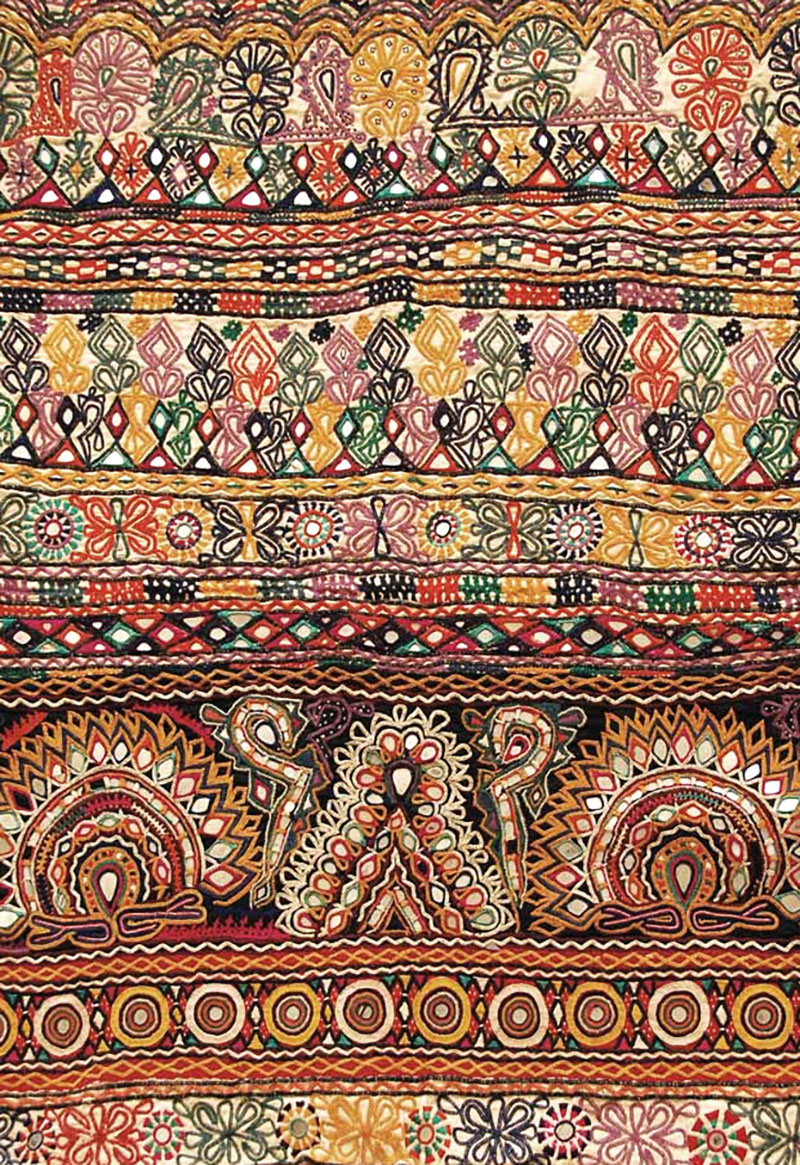Widely practised in the Kathiawar region of Rajasthan, heer embroidery is named after the untwisted silk floss used for embroidering plain cotton fabric. It is distinguished by densely embroidered geometric patterns in bold and deep colours such as crimson, deep orange, purple and blue. Another key feature is its use of tiny mirrors or shisha, which are stitched onto the fabric, along the borders or in the main design, to emphasise aspects of the design. This embroidery, practised primarily by the Kathis of Rajasthan, is used to decorate household textiles, such as bhitiyas, consisting of embroidered panels called chaklas, and door-hangings or torans.
Scholars have suggested that heer embroidery may have originated from the Hephthalites or White Huns (Huna), a group of Central Asian tribes who had invaded India in the fifth century, from whom the Kathis are believed to have descended. Evidence of this genealogy is cited in a distinctive motif, of two female figures with bird heads, found in chaklas made by the Kathi women: the motif, which represents the “mother goddess,” is usually associated with sun-worshippers, such as the Huns.
Similar to other types of bharat (embroidery), heer embroidery is used to create intricate geometric motifs in shapes with heavy fills. These are rendered using different types of stitches, such as the long, darning stitch, adiya-fatiya; the thorn stitch, bavaliya; and others such as the chain stitch, double–satin stitch and the interlacing or herringbone stitch. The long stitches are made parallel to the weft and perpendicular to the warp, to produce the effect of shading. Shisha is incorporated into the design using the buttonhole stitch.
Over the years, heer bharat has come to take on influences from other, often similar, forms of embroidery from the various communities in the Kathiawar region of Rajasthan, Kutch region of Gujarat and the shared Banni region. The intricately embroidered patterns used in heer bear similarities to those developed by the Jat communities, while the pastoral motifs seen in later instances of heer embroidery are borrowed from the repertoire of the Mochi community of Rajasthan. Research indicates that the communities currently practising this form of embroidery are the Jats, Lohanas, Mochis and Kathis. Other communities from other regions of India practise similar forms of fill embroidery, such as Banni bharat, Bagh phulkari and Parsi embroidery.







